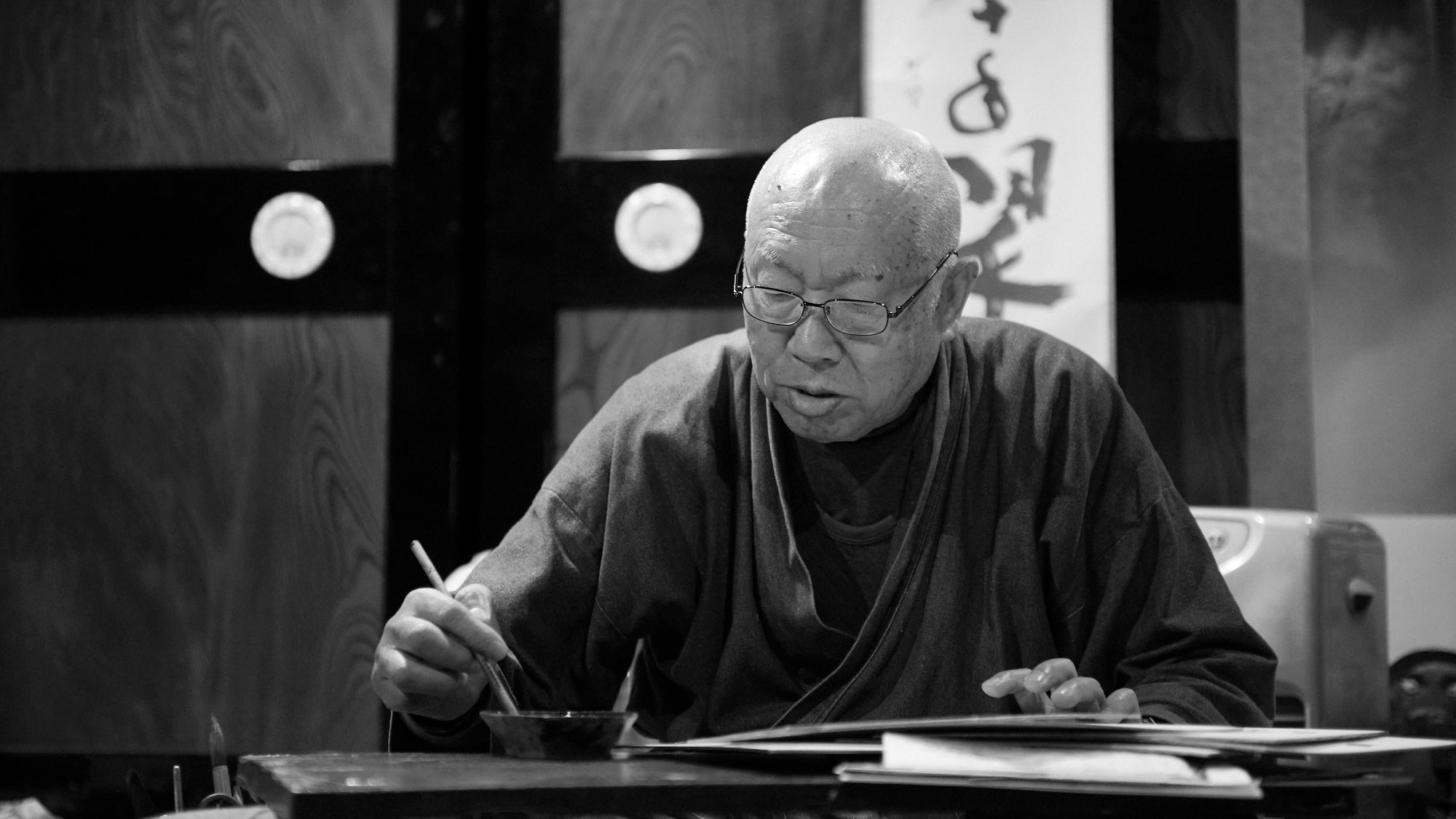
Painter of the Northern Seas, Art and Life of Kitamura Takashi
Written by Team MUSUBI
"I only draw the ships from behind. Capturing the moment of departure and the beginning of a journey."
His signature works, depicting the treacherous journey of merchant ships in the Edo period (1603 CE–1868 CE), are a sought-after representation of the traditional Kutani ware style. However, Kutani ware master Kitamura Takashi’s artist journey is anything but traditional. He does not hail from a long line of artists—instead, his introduction to Kutani ware came at the age of fifteen, working with his truck driver father and assisting with the transportation of the polychromatic ceramics.
During his tasks, he caught glimpses of the vibrant Kutani go-sai, five color, designs, often adorned with gold leaf accents. The sight of these pieces inspired a sense of longing in the future artist, causing him to wonder where the exquisite items were made. The unending curiosity filled his heart, and so his dream of becoming a Kutani ware artist was born.
Table of Contents
Allured by Kutani Ware's Golden Beauty


The beauty of the gold and cobalt blue glazes he glimpsed through the packaging drew him in, a fascination not limited to him alone but shared by all visitors to Kenrokuen who were captivated by the arrayed ceramics' splendid beauty. Young Kitamura took pride in this work and pondered how he might make such beauty his life's work. But he lamented,

Training Under the Master

With a blend of hope and trepidation, young Kitamura approached the door of the porcelain painter, contemplating his potential in the art world and the challenges he might face. He thought to himself, "If I am turned away, I'll resign to a life of selling Kutani ware." However, as he crossed the threshold and met the craftsperson face-to-face, he asked if he could also carve a niche for himself in the world of porcelain art. The master, who also hailed from humble beginnings, reminded Kitamura that he too had started with no greater skill or knowledge than what Kitamura possessed at that moment.
"Even I, was able to establish myself. Why should you not achieve fame in this world? But you must work hard and apply yourself diligently."

"The true art of Kutani ware lies in its bold coloration and intricate designs that speak volumes of its rich tradition and cultural significance."
Thus, Kitamura's path was set. After years of apprenticeship, he mastered the art of Kutani decoration, specializing in the use of gold and red paints, human figures, and birds-and-flowers designs, even venturing into the realm of calligraphy of the Japanese Hyakunin Isshu poems. Yet, he was advised that to gain firmer recognition, success in exhibitions was crucial. Following this advice, at 27 years old, Kitamura worked on a porcelain vessel of a painting of a graceful and magnificent green yatsude leaf, which gained an award at the Nitten National Exhibition, securing him a place in the art world.
Enchanted by the Kitamaebune Ships

"I only draw the ships from behind. To capture the moment of departure and the beginning of a journey."
In his forties, during the 1970s, Kitamura visited a declining port town that once bustled with the activity of kitamaebune ships—merchant vessels that traversed the Sea of Japan during the Edo Period. Inspired by the town's efforts to preserve the legacy of these ships through a museum, Kitamura embarked on a project to paint them. His inspiration came from an old, imposing painting of a kitamaebune that he discovered in a shrine. This endeavor led him to focus on depicting these ships, often choosing to portray them from the rear, capturing a sense of hope and departure rather than the finality of their return.
Kitamura's interest in ships was natural for Japan, an island nation with a deep connection to the sea. His work even caught the attention of the Emperor, who had studied maritime subjects in Britain and expressed admiration for Kitamura's ships.

Not to mention, Kitamura's son, Kazuyoshi, who was a middle school student at the time, was thrilled to get Michael Jackson's autograph, an excitement that goes without saying. Today, his son is also a representative Kutani ware artist.
A Tribute to the Brave Sailors

Already renowned for his Kutani ware painting, Kitamura Takashi discovered his true calling in depicting the kitamaebune, ships sailing northward. His works reflect a deep nostalgia for the Hokuriku region's past and honor the bravery of sailors who ventured on dangerous journeys, paying homage to their spirited legacy.
In Kitamura's skilled hands, the dynamic image of a ship braving tumultuous waves is vividly brought to life, exemplifying the peak of craftsmanship in Kutani ware. This innovative and captivating motif in Kutani porcelain not only showcases his extraordinary talent but also continues to enthrall and inspire all who behold its profound beauty and narrative depth.







Leave a comment
This site is protected by hCaptcha and the hCaptcha Privacy Policy and Terms of Service apply.